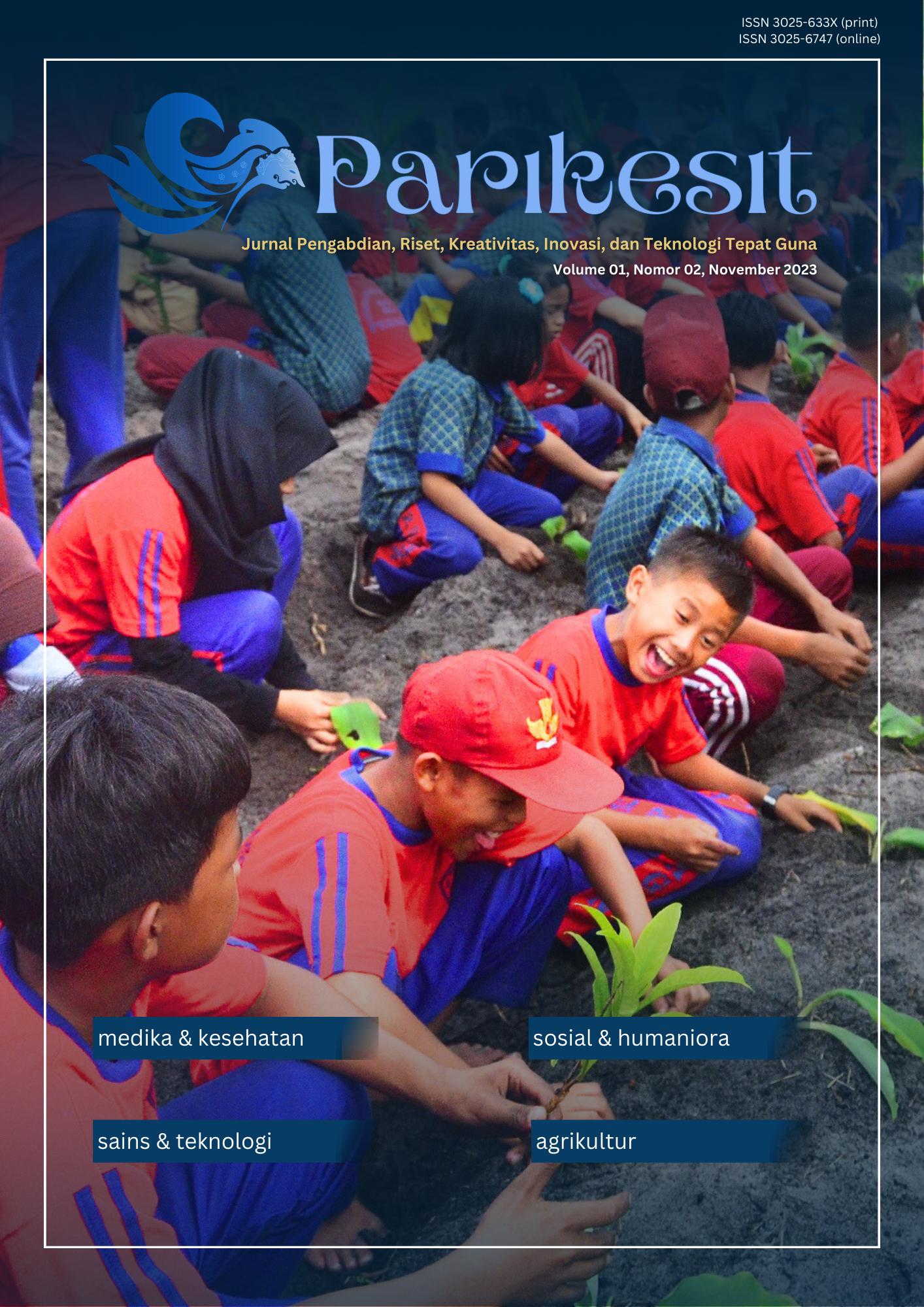Perbedaan Waktu Pengukusan Terhadap Hasil Akhir Produk Olahan Telur Asin Kelompok Pembinaan Kesejahteraan Keluarga Desa Rawa Subur, Kapuas Murung, Kalimantan Tengah
Abstrak
Desa Rawa Subur yang terletak di Kalimantan Tengah, khususnya di wilayah Kapuas, memiliki potensi sektor peternakan dengan fokus pada komoditas itik, Telur yang dihasilkan dari itik kemudian diolah menjadi telur asin oleh masyarakat setempat guna meningkatkan daya jual produk. Permintaan yang semakin tinggi atas telur asin di Desa Rawa Subur mendorong masyarakat untuk mencari metode pengolahan yang lebih efisien, salah satunya adalah melalui penggunaan oven. Proses pengolahan telur asin menggunakan oven melibatkan pemasakan pada suhu 80°C selama 24 jam, yang kemudian diikuti oleh tahap pengukusan selama beberapa jam. Meski demikian, belum ada pengetahuan umum mengenai periode optimal untuk tahap pengukusan guna memastikan tercapainya kualitas telur asin yang optimal. Penelitian ini bertujuan unruk mengungkap dampak variabel lama waktu pengukusan setelah pengovenan terhadap karakteristik tekstur, tampilan visual, dan kadar garam, dengan upaya merumuskan suatu Standar Operasional Prosedur (SOP). Penelitian ini menggunakan rancangan acak lengkap yang melibatkan empat perlakuan durasi pengukusan (0, 2, 4, 6 jam) setelah pengovenan selama 24 jam. Analisis data dilakukan dengan metode Uji Regresi Linier Sederhana, yang bertujuan untuk mengidentifikasi keterkaitan antara variasi lama waktu pengukusan dan kandungan garam dalam telur asin. Hasil yang diperoleh dari uji laboratorium menunjukkan bahwa besaran kandungan garam pada telur asin dengan durasi pengukusan (0, 2, 4, 6 jam) secara berurutan adalah 16,85%; 20,97%; 22,33%; 24,87%, dengan nilai Signifikansi (Sig.) sebesar 0,021 (<0,05). Hal ini menegaskan bahwa waktu pengukusan memengaruhi kandungan garam dalam telur asin. Lebih rinci, pengaruh signifikan yang ditimbulkan oleh durasi pengukusan terhadap kandungan garam dalam telur asin adalah 95,8% dilihat dari nilai R2= 0,958. Dari hasil penelitian dapat dinyatakan bahwa semakin lama waktu pengukusan akan mengakibatkan peningkatan kandungan garam dalam telur. Dengan adanya luaran hasil penelitian ini, kelompok Pembinaan Kesejahteraan Keluarga Desa Rawa Subur mulai menerapkan Standar Operasional Prosedur (SOP) pengolahan dengan menggunakan mesin oven dan pengukusan selama 4 jam.
Referensi
Ariviani, S., Fauza, G., Ishartani, D. (2019). Peningkatan kualitas dan umur simpan telur asin di Industri Rumah Tangga telur asin melalui inovasi proses produksi. Prosiding PKM-CSR, 2, 355-360. https://doi.org/10.37695/pkmcsr.v2i0.584
Badan Pusat Statistik Kabupaten Kapuas. (2022). Kecamatan Kapuas Murung Dalam Angka. Badan Pusat Statistik Kabupaten Kapuas
Benjakul S. & Kaewmanee T. (2017). Sodium chloride preservation in duck eggs. Egg Innovations and Strategies for Improvement. (1),415-426. https://doi.org/10.1016/B978-0-12-800879-9.00039-1
Direktorat Jendral Pembangunan dan Pengembangan Kawasan Transmigrasi. (2023). Pedoman Pelaksaan Kuliah Kerja Nyata Tematik Pemberdayaan Masyarakat di Kawasan Transmigrasi. Kementerian Desa Pembangunan Daerah Tertinggal dan Transmigrasi
Fajrina, E., Djaelani, A., Gunawan, A. (2020). Pengaruh media pengasapan terhadap kualitas eksterior dan organoleptik telur asin asap. Rawa Sains, 10(1):26-37. https://doi.org/10.36589/rs.v10i1.115
Mardiana, L. A., Daeli, S. N., Oktaviani, S. P., Siswanggi, G. H., Dewi, I. K. (2022). Pengaruh konsentrasi garam terhadap kadar protein telur asin pada Kelurahan Tunggakjati. Buana Farma, 2(1):43-46. https://doi.org/10.36805/jbf.v2i1.341
Novia, D., Juliyasari, I., Melia, S. (2018). Perbaikan mutu dan produksi telur asin Kelompok usaha Telur Asin di Sicing Padang Parimaan. Logista, 2(1), 1-14. https://doi.org/10.25077/logista.2.1.1-14.2018
Novia, D., Melia, S., & Ayuza, N. Z. (2012). Studi suhu pengovenan terhadap umur simpan telur asin. Peternakan Indonesia, 14(1):263-269. https://doi.org.10.25077/jpi.14.263-269.2012
Ramli, I., dan Wahab, N. 2020. Teknologi pembuatan telur asin dengan penerapan metode tekanan osmotik. ILTEK, 15(2):82-86. https://doi.org/10.47398/iltek.v15i02.29
Xu, L., Zhao, Y., Xu, M., Nie, X., Du, H., Tu, Y. (2017). Effect of salting treatmen on the pshycochemical properties, textural properties, and microstuctures of duck eggs. Plos One, 12(8):1-17. https://doi.org/10.1371/journal.pone.0182912
Copyright (c) 2023 Jurnal Pengabdian, Riset, Kreativitas, Inovasi, dan Teknologi Tepat Guna

This work is licensed under a Creative Commons Attribution-ShareAlike 4.0 International License.









